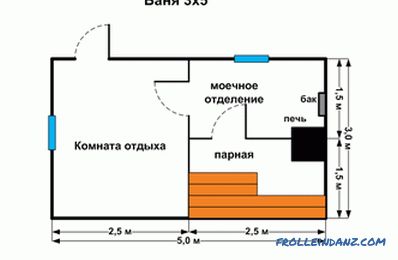The quality of sawn timber depends on the properties of round timber, more precisely, on the presence of flaws in them.
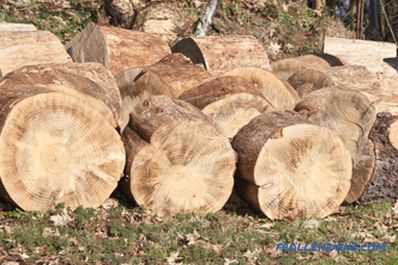
The quality of sawn timber depends on signs of round timber, that is, the presence of flaws in them.
The regulatory documentation of defects has more than 80, but the grade of materials is determined only by 10 types of flaws (signs).
Therefore, before understanding the sorting of sawn timber, it is necessary to understand what signs of roundwood affect this process.
About varieties of roundwood and lumber
Initially, round timber, depending on the type of wood, is divided into two groups: coniferous and deciduous. The next step is the division in thickness. For both groups of timber in thickness there are three types: small, medium and large.
By the type of processing the round timber is divided into four groups. It can be:
- Use in a round shape.
- Turn into wood pulp or recycle to cellulose.
- Turn into veneer by peeling or planing.
- Turn into lumber.
Lumber is divided into four grades:
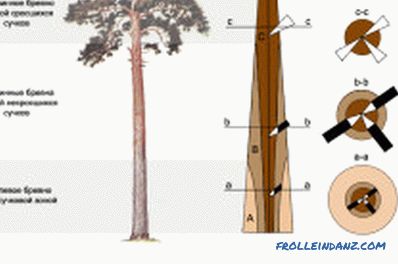
Figure 1. Cutting pattern of the whips.
- 1 grade is obtained from the butt of the log, in which there are practically no knots;
- 2 grade is obtained from the butt and middle part, having a small number of knots;
- 3 and 4 grade can be obtained from any part of the log;
- the highest, selected grade is highlighted in a separate category.
The sort in the process of sorting sawn timber is determined by:
- for a board - by its worst side or edge;
- for a bar or bar - by the worst side.
From which part of the sawn whip which sort of lumber can be obtained, it is clear from image 1.
The main signs of grade are the following:
- knots;
- mushroom coloring and rot;
- chemical coloring;
- traces left by insects;
- cracking and deformation;
- consequences of disrupting the shape of the trunk;
- wood structure defects;
- wounds;
- natural (normal) wood deposits;
- treatment defects and shipping damage.
In the process of sorting lumber, as a result, each grade must meet specific requirements for the absence of defects. We indicate only the requirements for knots and cracks.

Table of varieties of raw timber and stem wood.
Selected variety. No defects, except knots, are not allowed. Knots can be no more than 2 per 1 m length. On the edges of the boards are allowed parts of a knot, the size of which does not exceed 20% of its diameter.
- 1st grade. There should be no knots with a diameter greater than 10 mm, knots that can fall out at any time, and depressions left over from the already dropped knots. The total length of cracks (not through) should not exceed a quarter of the length of the material.
- 2 grade. There should be no falling out knots and healthy knots whose diameter exceeds 20 mm. The total length of cracks (not through) should not exceed one third of the length of the material.
- 3 grade. Almost all defects are allowed.
- 4 grade. Vices are determined not for a specific product, but for 1 m 3 material.
Automation of the sawing process
Before considering the sorting process, it is advisable to establish its place in the chain of the automated control system (ACS) of wood processing at the enterprise, that is, the movement of the log from entering enterprise to finished products. This is what this sequence looks like.
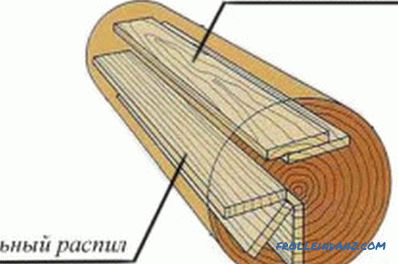
The cutting scheme of the tree trunk.
- The incoming material (logs) is recorded. This can be done manually or using an automatic acceptance line.
- Trimming and sawing, for example, on boards.
- Raw sorting boards using a local line.
- Submission of boards to special machines, which form a pile, which goes further to the drying shop.
- Drying of the boards and their movement in piles within the drying shop.
- Submission of boards to the dry sorting line.
Next, the packages are formed according to the sorting results.
It turns out that the distribution of lumber by grade begins after sawing a log, that is, from the same round timber, you can get a different quality material that the dry sorting line performs. In the processing chain, the sorting line is located after drying.
Such a place of the local lumber sorting subsystem in the process chain of the ACS allows detecting knots that fall out after drying and sharply identify other flaws.
Automating the process of sorting lumber
In the process of making a board, the sorting is performed twice: before and after drying.
When preparing for drying, partial cutting of boards is performed to eliminate defects at their ends.Boards are sorted by wood and cross-sectional sizes. After drying, they are sorted by quality and at the last stage they divide by length.
The division by size of cross-sections is necessary for the formation of uniform drying bags, which select the appropriate mode and duration of drying. Thickness and width are measured anywhere on the board, but no closer than 150 mm from its ends. For low-grade boards packages can be formed only according to their thickness.
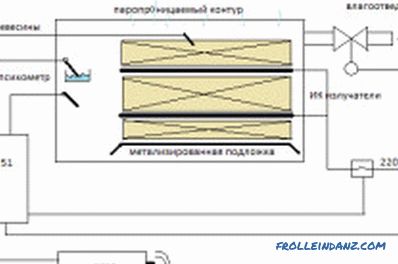
Timber Drying Scheme.
At this stage, the line operator, having received data on the dimensions, sends the product to the appropriate drive, in which a predetermined number of them is created, after which the drive is opened and the material is conveyed to the drying workshop. In the shop form drying bags.
Timber dividing by quality can be carried out by the controller when the boards are located on the miter tables in the sawing shop. However, on the tables more than 7-8 boards per minute, the controller will not be able to sort.
The main division is performed on transport conveyors. Control is carried out by several workers-supervisors. They are arranged in series along the conveyor and manually change the direction of movement of the boards to the corresponding drive.
Such a method is far not only from automatic, but cannot be called automated.
It is possible to talk about process automation if the board rotates the board so that the operator has the opportunity to inspect the board from all sides and, having decided which grade to include, send it to the appropriate drive. To do this, there are gates on the conveyor, which he controls.
The operator can, at his discretion, change the grade of the board. Sometimes it happens that, taking into account the entire length of the board corresponds to the 3rd class. But there is a section of sufficient length in which the number of defects meets the requirements of a higher class.
It is clear that this method of division by varieties is ineffective and is only suitable for industries with a small volume of products. For large sawmills, it is economical to create automatic lines.
Didn't find the answer in the article? More information on the topic:
-
Mauerlat: how to calculate its dimensions?
Mauerlat: construction dimensions. In what cases is it not necessary to calculate the size of the mauerlat? Specificity of operation of the power plate. Two types of main strapping of the upper belt of the walls.



